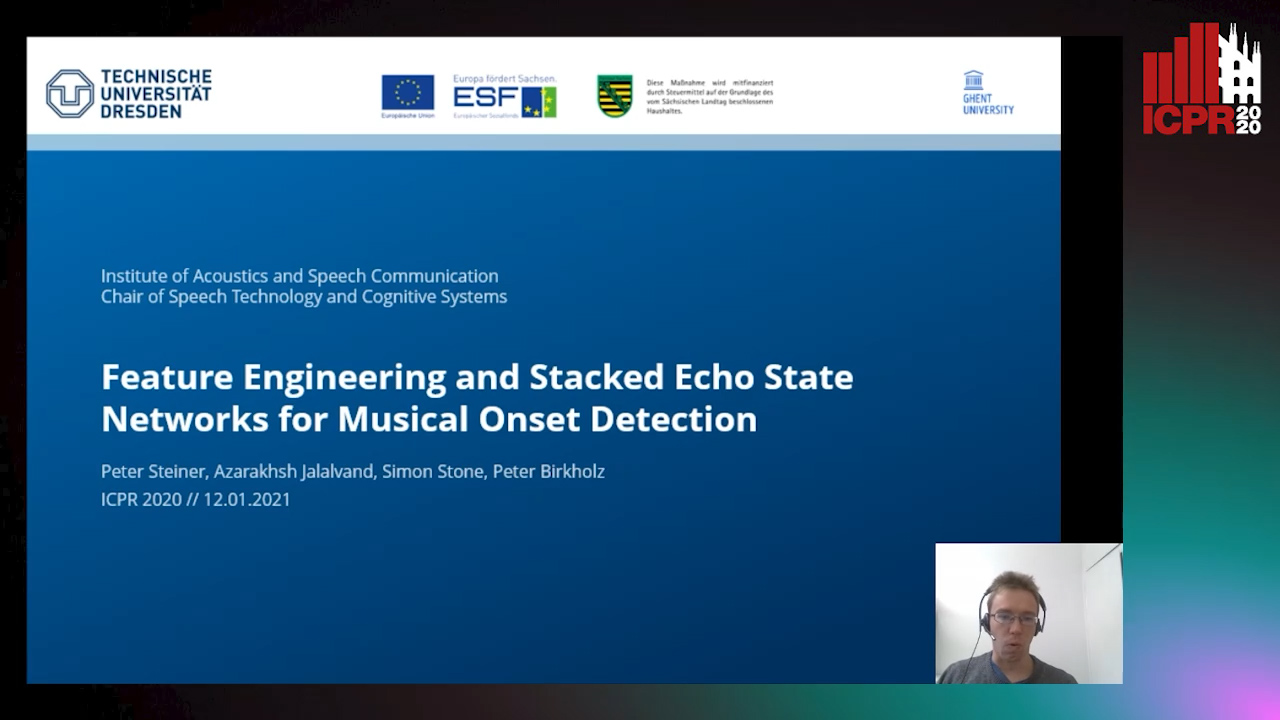Peter Steiner
Paper download is intended for registered attendees only, and is
subjected to the IEEE Copyright Policy. Any other use is strongly forbidden.
Papers from this author
Feature Engineering and Stacked Echo State Networks for Musical Onset Detection
Peter Steiner, Azarakhsh Jalalvand, Simon Stone, Peter Birkholz

Auto-TLDR; Echo State Networks for Onset Detection in Music Analysis
Abstract Slides Poster Similar
In music analysis, one of the most fundamental tasks is note onset detection - detecting the beginning of new note events. As the target function of onset detection is related to other tasks, such as beat tracking or tempo estimation, onset detection is the basis for such related tasks. Furthermore, it can help to improve Automatic Music Transcription (AMT). Typically, different approaches for onset detection follow a similar outline: An audio signal is transformed into an Onset Detection Function (ODF), which should have rather low values (i.e. close to zero) for most of the time but with pronounced peaks at onset times, which can then be extracted by applying peak picking algorithms on the ODF. In the recent years, several kinds of neural networks were used successfully to compute the ODF from feature vectors. Currently, Convolutional Neural Networks (CNNs) define the state of the art. In this paper, we build up on an alternative approach to obtain a ODF by Echo State Networks (ESNs), which have achieved comparable results to CNNs in several tasks, such as speech and image recognition. In contrast to the typical iterative training procedures of deep learning architectures, such as CNNs or networks consisting of Long-Short-Term Memory Cells (LSTMs), in ESNs only a very small part of the weights is easily trained in one shot using linear regression. By comparing the performance of several feature extraction methods, pre-processing steps and introducing a new way to stack ESNs, we expand our previous approach to achieve results that fall between a bidirectional LSTM network and a CNN with relative improvements of 1.8% and -1.4%, respectively. For the evaluation, we used exactly the same 8-fold cross validation setup as for the reference results.